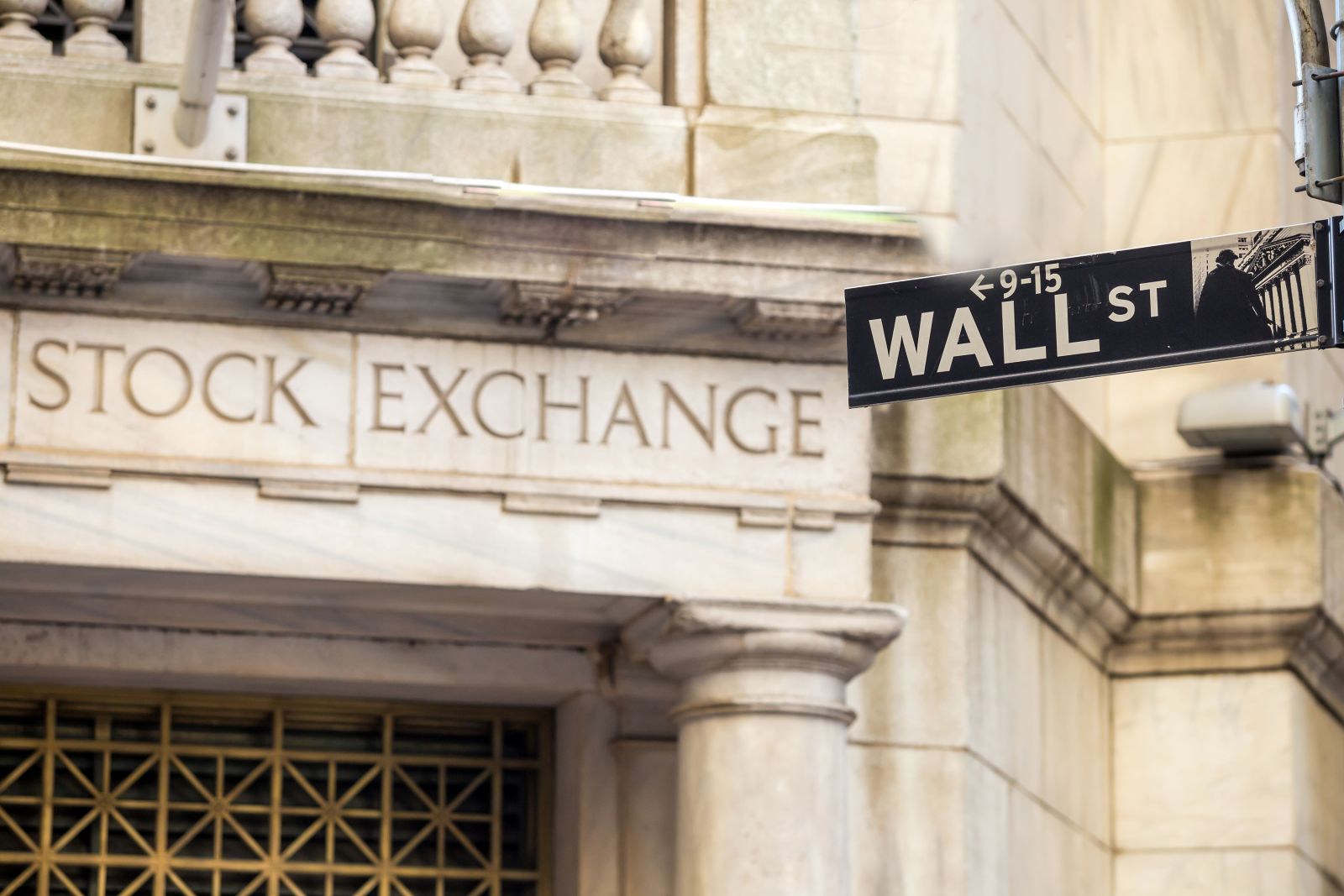
The S&P 500 Index ($SPX) (SPY) Friday closed up +1.81%, the Dow Jones Industrials Index ($DOWI) (DIA) closed up +1.56%, and the Nasdaq 100 Index ($IUXX) (QQQ) closed up +1.89%. June E-mini S&P futures (ESM25) are up +1.84%, and June E-mini Nasdaq futures (NQM25) are up +1.88%.
Stock indexes on Friday finished a volatile session sharply higher. Stocks recovered from a mid-morning swoon Friday as short covering emerged after the Financial Times reported that Boston Fed President Collins said the Fed “would absolutely be prepared” to help stabilize financial markets if conditions become disorderly. Stocks also found support Friday from better-than-expected Q1 quarterly earnings results from US banks and easing price pressures after the March US PPI report rose less than expected.
Stocks gave up an early advance and briefly turned lower after US consumer sentiment plunged and price expectations soared. The University of Michigan’s April US consumer sentiment index fell more than expected to a 2-3/4 year low, and the University of Michigan’s April US 1-year inflation expectations indicator jumped to the highest since 1981 on growing tariff concerns.
Also, US chip manufacturers retreated Friday after the China Semiconductor Association said that chip tariffs would be based on where they are manufactured, not where they’re shipped from.
The March US final-demand PPI unexpectedly eased to +2.7% y/y from +3.2% y/y in Feb, better than expectations of an increase to +3.3% y/y and the smallest increase in 6 months. Also, the March PPI ex-food and energy unexpectedly eased to +3.3% y/y from +3.6% y/y in Feb, better than expectations of an increase to +3.6% y/y.
The University of Michigan’s April US consumer sentiment index fell -6.2 to a 2-3/4 year low of 50.8, weaker than expectations of 53.5.
The University of Michigan’s April US 1-year inflation expectations indicator jumped to +6.7%, much higher than expectations of +5.2% and the highest since 1981. Also, Apr 5-10 year inflation expectations rose to +4.4%, higher than expectations of +4.3% and the highest since 1991.
Fed comments on Friday were bearish for stocks and bonds. Minneapolis Fed President Kashkari reiterated that the potential inflationary impact of tariffs makes the Fed less likely to lower interest rates, even in the face of a weakening economy. Also, St. Louis Fed President Musalem warned of stagflation in the US economy from tariffs, saying there’s a near-term risk that inflation will rise while the labor market weakens.
In addition, New York Fed President Williams said, “The current modestly restrictive stance of monetary policy is entirely appropriate given the solid labor market and inflation still above our 2% goal.” He added that he expects slower economic growth, higher unemployment, and a pickup in inflation due to the US tariff policy and reduced immigration.
Escalation of the US-China trade war was bearish for stocks after China raised tariffs on all US goods on Friday to 125% from 84% in retaliation for the US raising tariffs on Chinese goods to 145%. China’s Ministry of Finance also warned that China plans to “resolutely counterattack and fight to the end” if the US continues to infringe on its rights and interests.
The US tariff turmoil is hammering the dollar and boosting gold. The dollar index Friday sank to a 3-year low, and gold prices soared to an all-time high. The markets are concerned about the effects of US trade policies, which have caused consumer confidence to plummet and have prompted many companies to suspend their capital spending plans, a negative factor for GDP growth. Also, the dollar is facing a confidence crisis as the US weaponizes tariffs, diminishing the dollar’s reserve-currency status and prompting some foreign investors to liquidate their dollar assets.
On Wednesday, President Trump announced a 90-day pause on higher reciprocal tariffs on 56 nations but left in place the new 10% baseline tariff on virtually all nations. Meanwhile, the EU Thursday said it will delay for 90 days the implementation of 25% tariffs on 21 billion euros worth of US goods sent to Europe.
Stocks have been under pressure over the past month due to fears that US tariffs will weaken economic growth and corporate earnings. On March 4, President Trump imposed 25% tariffs on Canadian and Mexican goods and doubled the tariff on Chinese goods to 20% from 10%. Last Wednesday, President Trump signed a proclamation to implement a 25% tariff on US auto imports. The tariffs will initially target vehicles fully assembled outside the US and, by May 3, will expand to include automobile parts made outside the US. Mr. Trump said the tariffs were “permanent,” and he was not interested in negotiating any exceptions. Last Saturday, a 10% baseline tariff for virtually all nations took effect.
The markets are discounting the chances at 25% for a -25 bp rate cut after the May 6-7 FOMC meeting.
Q1 earnings reporting season began Friday as big US banks reported their results. According to data compiled by Bloomberg Intelligence, the market consensus is for Q1 year-over-year earnings growth of +6.7% for the S&P 500 stocks, down from expectations of +11.1% in early November. Full-year 2025 corporate profits for the S&P 500 are seen rising +9.4%, down from the forecast of +12.5% in early January.
Overseas stock markets on Friday settled mixed. The Euro Stoxx 50 closed down -0.66%. China’s Shanghai Composite Index climbed to a 1-week high and closed up +0.45%. Japan’s Nikkei Stock 225 closed down -2.96%.
Interest Rates
June 10-year T-notes (ZNM25) Friday closed down -27.5 ticks. The 10-year T-note yield rose +5.3 bp to 4.478%. June T-notes on Friday tumbled to a 7-week low, and the 10-year T-note yield jumped to an 8-week high of 4.586%. The ongoing tariff turmoil fueled a selloff in the dollar to a 3-year low Friday, thus causing losses for foreign investors in US stocks and bonds and encouraging them to sell those assets.
T-notes extended their losses Friday after the University of Michigan’s April US 1-year inflation expectations indicator jumped to +6.7%, the highest in 43 years. Hawkish comments Friday from Minneapolis Fed President Kashkari weighed on T-notes when he said that the potential inflationary impact of tariffs makes the Fed less likely to lower interest rates. However, T-notes recovered from their worst levels after the Financial Times reported that Boston Fed President Collins said the Fed is ready to help stabilize markets if needed.
European bond yields on Friday were mixed. The 10-year German bund yield fell -0.9 bp to 2.570%. The 10-year UK gilt yield rose +11.0 bp to 4.753%.
UK Feb manufacturing production rose +2.2% m/m, stronger than expectations of +0.2% m/m and the biggest increase in 20 months.
Swaps are discounting the chances at 95% for a -25 bp rate cut by the ECB at the April 17 policy meeting.
US Stock Movers
A recovery in the Magnificent Seven stocks Friday boosted the broader market. Apple (AAPL) closed up more than +4%, and Nvidia (NVDA) closed up more than +3%. Also, Alphabet (GOOGL) and Amazon.com (AMZN) closed up more than +2%. In addition, Microsoft (MSFT) closed up more than +1%.
Gold mining stocks surged Friday after the price of gold rallied to a new all-time high. As a result, AngloGold Ashanti Plc (AU) closed up more than +9%, and Newmont (NEM) closed up more than +8%.
Cryptocurrency-exposed stocks moved higher Friday as the price of Bitcoin (^BTCUSD) jumped more than +5%. As a result, Micro Strategy (MSTR) closed up more than +9% to lead gainers in the Nasdaq 100. Also, MARA Holdings (MARA) closed up more than +5%, Riot Platforms (RIOT) closed up more than +3%, and Coinbase Global (COIN) closed up more than +2%.
US chip manufacturers moved lower Friday after the China Semiconductor Association said that chip tariffs would be based on where they are manufactured, not where they’re shipped from. As a result, Texas Instruments (TXN) closed down more than -5% to lead losers in the S&P 500 and Nasdaq 100. Also, GlobalFoundries (GFS) closed down more than -1%, Micron Technology (MU) and Intel (INTC) closed down -0.70% and Microchip Technology (MCHP) closed down -0.26%.
Trucking stocks slid Friday amid fear that an escalating trade war between China and the US will curb trucking demand. As a result, Saia Inc (SAIA) closed down by more than -6%, and Old Dominion Freight Line (ODFL) and Heartland Express (HTLD) closed down by more than -2%. Also, JB Hunt Transport Services (JBHT) and Hub Group (HUBG) closed down more than -1%.
JPMorgan Chase (JPM) closed up more than +4% to lead gainers in the Dow Jones Industrials after reporting Q1 adjusted revenue of $46.01 billion, stronger than the consensus of $44.39 billion.
Fastenal (FAST) closed up more than +6% after reporting Q1 net sales of $1.96 billion, better than the consensus of $1.95 billion.
Huntington Ingalls Industries (HII) closed up more than +6% after Goldman Sachs double-upgraded the stock to buy from sell with a price target of $234.
L3Harris Technologies (LHX) closed up more than +3% after Goldman Sachs double-upgraded the stock to buy from sell with a price target of $263.
Cinemark Holdings (CNK) closed up more than +2% after JPMorgan Chase upgraded the stock to overweight from neutral with a price target of $34.
Wells Fargo & Co (WFC) closed down almost -1% after reporting Q1 net interest income of $11.50 billion, weaker than the consensus of $11.81 billion.
Earnings Reports (4/14/2025)
Applied Digital Corp (APLD), FB Financial Corp (FBK), Goldman Sachs Group Inc/The (GS), M&T Bank Corp (MTB), Pinnacle Financial Partners In (PNFP).







